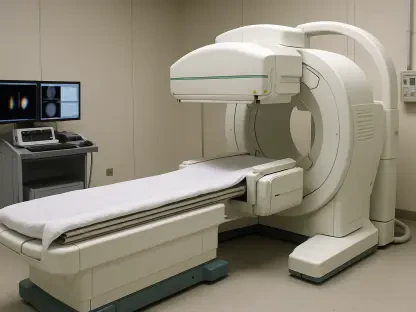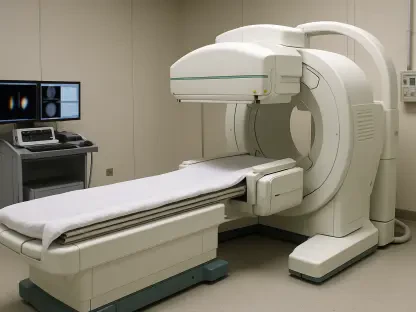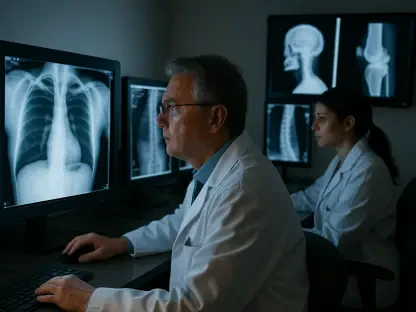Market Snapshot: Why GenesisX Matters in Cardiac Care
In the dynamic landscape of cardiac surgery, where precision and accessibility often determine patient outcomes, a groundbreaking development has emerged to reshape market dynamics and improve lives. Stereotaxis, a leading medical technology company, has introduced the GenesisX robotic magnetic navigation system, recently cleared by the FDA under 510(k) regulations. This innovation promises to redefine endovascular procedures, particularly for treating cardiac arrhythmias through ablation techniques. The significance of this advancement lies not just in its technological prowess but in its potential to address long-standing adoption barriers, making robotic surgery more accessible to hospitals worldwide. This market analysis delves into the trends, data, and projections surrounding GenesisX, exploring its impact on the cardiac care sector and offering strategic insights for stakeholders navigating this evolving field.
Dissecting Market Trends: The Rise of Robotic Solutions in Cardiac Surgery
Historical Challenges and Current Shifts
The cardiac surgery market has long grappled with the integration of robotic technologies due to complex installation requirements and high infrastructure costs. Previous systems, including earlier iterations from Stereotaxis, often demanded significant operating room modifications and specialized power setups, limiting their adoption to well-funded institutions. However, a notable shift is underway as the industry pivots toward user-friendly and adaptable solutions. GenesisX stands as a testament to this trend, incorporating built-in magnetic shielding and standard power compatibility, eliminating the need for structural anchoring or wall modifications. This design overhaul addresses critical pain points, positioning the system as a catalyst for broader market penetration in cardiac catheterization labs globally.
Clinical Precision as a Market Driver
Another defining trend in the cardiac surgery market is the growing emphasis on precision and safety in procedures like cardiac ablation, used to treat arrhythmias such as atrial fibrillation. GenesisX builds on Stereotaxis’ legacy of enabling physicians to navigate catheters with magnetic tips through robotic controls and computer interfaces, offering unmatched accuracy compared to traditional manual methods. Market data suggests that enhanced control and reduced complication risks are driving demand for such technologies, particularly as patient outcomes become a key metric for hospital performance. While challenges like the learning curve for new users persist, the system’s smaller cabinet and miniaturized electronics optimize space in busy labs, aligning with the market’s push for practical yet cutting-edge tools.
Global Adoption and Competitive Positioning
The global cardiac surgery market is witnessing a surge in demand for robotic systems, fueled by regulatory approvals and strategic expansions. Stereotaxis has initiated a limited launch of GenesisX in the U.S. and Europe, following CE mark approval, signaling a deliberate approach to capturing market share. Despite financial headwinds—evidenced by a reported third-quarter revenue decline and wider net loss—the company projects that GenesisX orders will surpass those of its predecessor, reflecting confidence in its competitive edge. Collaborations, such as the partnership with CardioFocus on robotic pulsed field ablation (PFA) treatments, further highlight Stereotaxis’ strategy to diversify offerings and stay ahead of competitors. Market analysts note that while cost barriers remain in some regions, economies of scale could lower expenses as adoption grows from 2025 onward.
Data Insights: Market Projections for GenesisX and Beyond
Adoption Rates and Revenue Potential
Analyzing current market data, the introduction of GenesisX is poised to accelerate adoption rates of robotic navigation systems in cardiac care over the next few years. Projections indicate a steady increase in demand, particularly in developed markets like the U.S. and Europe, where hospital infrastructure can support rapid integration. Stereotaxis’ focus on simplifying installation is expected to drive uptake in mid-tier facilities previously deterred by logistical challenges, potentially expanding the addressable market by a significant margin. Financial forecasts, while tempered by recent quarterly setbacks, suggest that revenue growth could rebound as full-scale launches progress, with GenesisX acting as a cornerstone for Stereotaxis’ portfolio from 2025 to 2027.
Innovation Pipeline and Market Expansion
Beyond immediate adoption, Stereotaxis’ broader innovation pipeline offers a glimpse into sustained market growth. The FDA clearance of proprietary tools like the MAGiC Sweep mapping catheter, alongside pending authorization for the MAGiC ablation catheter, underscores a commitment to enhancing clinical capabilities. Additionally, acquisitions such as Access Point Technologies in the current year bolster catheter development, while partnerships for emerging techniques like PFA position the company at the forefront of ablation advancements. Market projections suggest that these initiatives could diversify revenue streams, reducing reliance on a single product and strengthening Stereotaxis’ foothold in the global cardiac surgery market, estimated to grow steadily through the end of the decade.
Regulatory and Economic Influences
Regulatory landscapes and economic factors also play a pivotal role in shaping market trajectories for robotic cardiac systems. FDA clearances and CE marks provide a competitive advantage, facilitating faster market entry compared to peers awaiting approvals. However, potential shifts in international standards or reimbursement policies could influence adoption timelines, particularly in cost-sensitive regions. Economic analyses highlight that while upfront costs for systems like GenesisX remain a hurdle, long-term savings from reduced complications and shorter recovery times may sway hospital budgets. Stakeholders anticipate that strategic pricing models and insurance advocacy will be critical to unlocking broader market access in the coming years.
Reflecting on Market Impact: Strategic Takeaways for the Cardiac Sector
Looking back, the analysis of GenesisX reveals a transformative moment for the cardiac surgery market, as Stereotaxis successfully tackled historical barriers with innovative design and strategic foresight. The system’s ability to integrate seamlessly into existing hospital setups marks a turning point, while its clinical precision reinforces the value of robotic solutions in enhancing patient care. Financial challenges persist, yet the company’s focus on portfolio expansion through proprietary catheters and partnerships lays a foundation for resilience. For stakeholders, the key takeaway is the need to prioritize adaptability in technology adoption—hospitals are encouraged to explore phased implementations to mitigate integration risks. Additionally, advocating for broader insurance coverage emerges as a vital step to ensure accessibility. Moving forward, industry players are advised to monitor regulatory trends and invest in training programs to maximize the potential of innovations like GenesisX, ensuring that the benefits of robotic cardiac surgery reach diverse patient populations worldwide.









